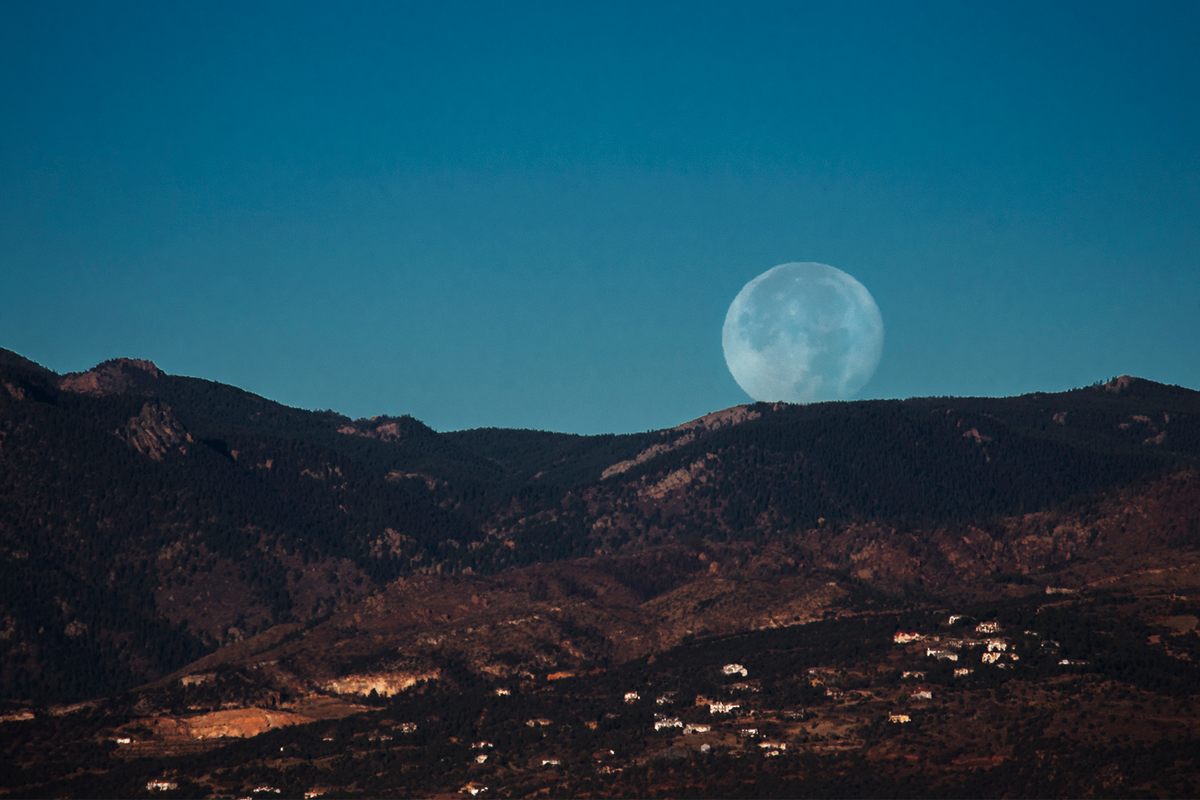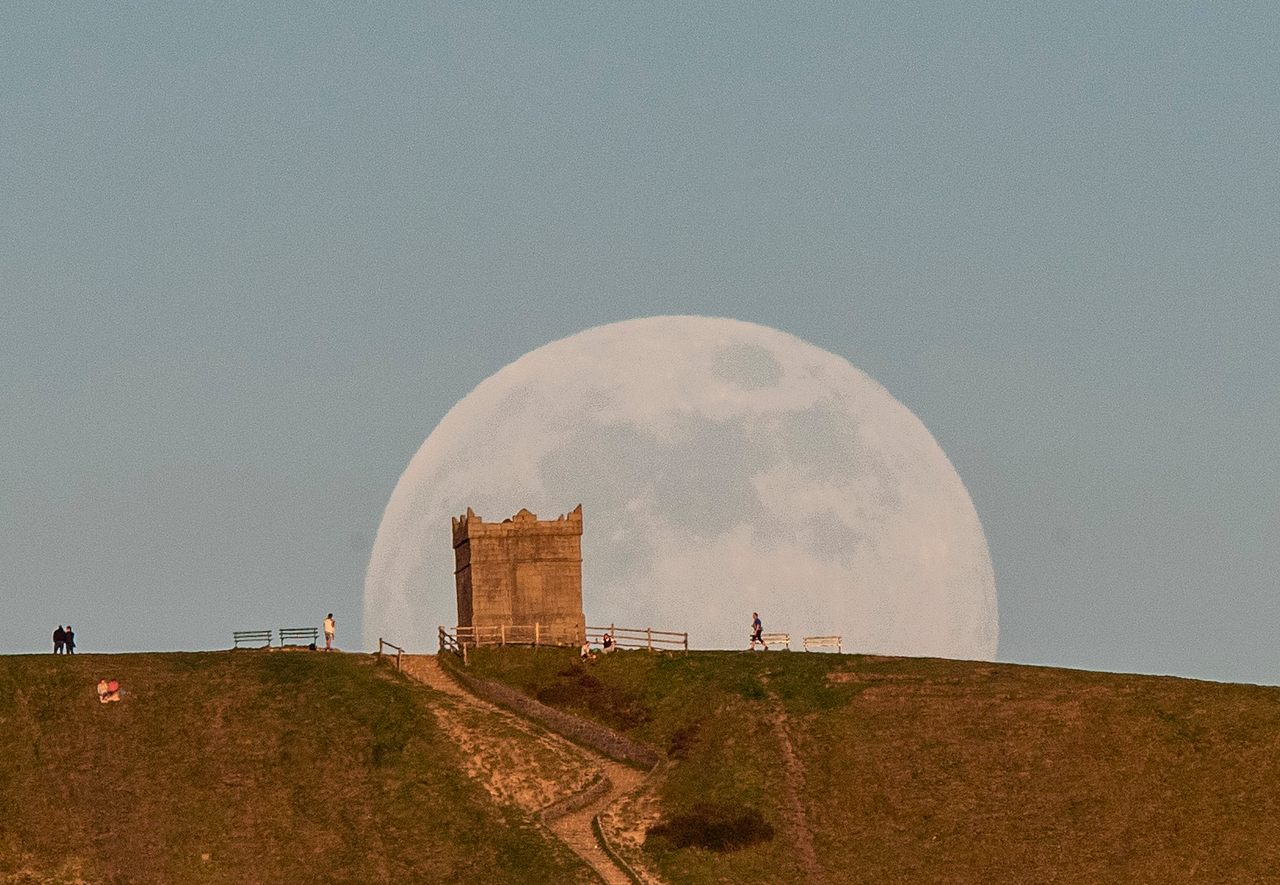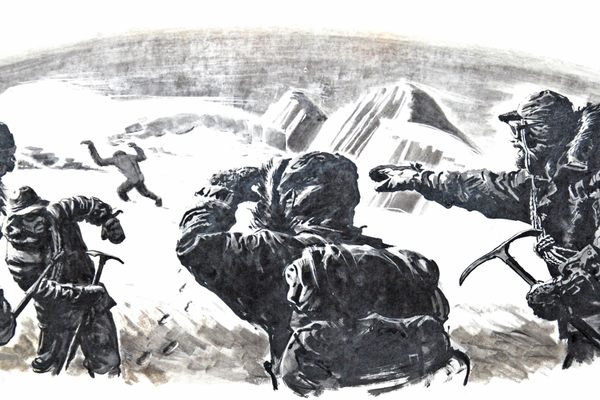All the Other Names for the Moon
The “Supermoon” makes headlines, but it’s a relatively recent entry in a long history of descriptions of the moon.
The moon is one of the great constants of living on Earth, even as it’s constantly changing. It disappears; it returns, time after time. And so over and over again, we name the moon, the ways it changes, and the rhythms it marks.
Every 29 and a half days, the moon cycles through at least eight common English names: the New Moon, the Crescent Moon (new and old), the Gibbous Moon (waxing, waning), the Full Moon, the Quarter Moon (first and last). In Hawai’i, there are more ways to call the moon as it grows and shrinks: Hilo Moon, Hoaka Moon, Kūkahi Moon, Kūlua Moon, Kūkkolu Moon (with a low tide in the afternoon), Kūpau Moon, ‘Olekūkahi Moon, ‘Olekūlua Moon (the most challenging moon), and that’s only halfway through the list. Each of these moons is just a sliver more in the sky, but people noticed and called each lunar advance a new name.

One of the best-known modern American descriptions of the Moon was bestowed on the orb by a marketing-minded scientist in 1979: the Supermoon. The Supermoon—known to scientists as a perigee syzygy—is the name given to the point in the Moon’s orbit when it is closest to Earth, and the full moon appears unusually big and bright in the night sky, a phenomenon which occurs three or four times each year. There’s also an apogee syzygy, which is sometimes also called a Micromoon, when the moon is at its furthest point from Earth, but it is less popular, because we like things big.
Of course, there are many other words for Moon in many other languages. Luna, tungi, kuu, hli, cap, yoreh, maan, mwezi, bulan, marama, ay, and more and more. Luna was also a goddess, one among the many deities who have represented the Moon over time. When we talk about the lunar landing in English, we’re honoring, in a way, a divine being whose worshippers all died long ago.

But there are also names for the Moon that notice when it arrives, what part of the year this cycle of the Moon is marking out. November’s moon is the Beaver Moon. There is the Harvest Moon, which many people place in fall, but then there are Moons for specific harvests: Corn Moon, Barley Moon, Hay Moon, Grain Moon, Fruit Moon, Nut Moon, Blackberry Moon, Strawberry Moon. There are moons for killing: Buck Moon, Hunter’s Moon, Hare Moon, Sturgeon Moon. There are Moons for growing things: Pink Moon (when the first spring flowers appear), Egg Moon, Budding Moon. There are Moons for harder times: Little Famine Moon, Big Famine Moon, Hungry Moon, Bony Moon, Dying Moon.
There is a regular old Blood Moon, and then there is the special Blood Moon of the lunar eclipse, which glows red. There is the well-known Blue Moon, the second full moon in the same calendar month, but there is also a Black Moon, a month’s second new moon. To some extent, these are arbitrary terms, because the limits we put on time, the complicated math of the solar calendar and its months, do not affect the Moon. Super or micro, black or blue, it keeps circling around the Earth, sweeping further and closer, again and again, no matter what names we call it.
This story originally ran in 2017; it has been updated for 2022.













Follow us on Twitter to get the latest on the world's hidden wonders.
Like us on Facebook to get the latest on the world's hidden wonders.
Follow us on Twitter Like us on Facebook